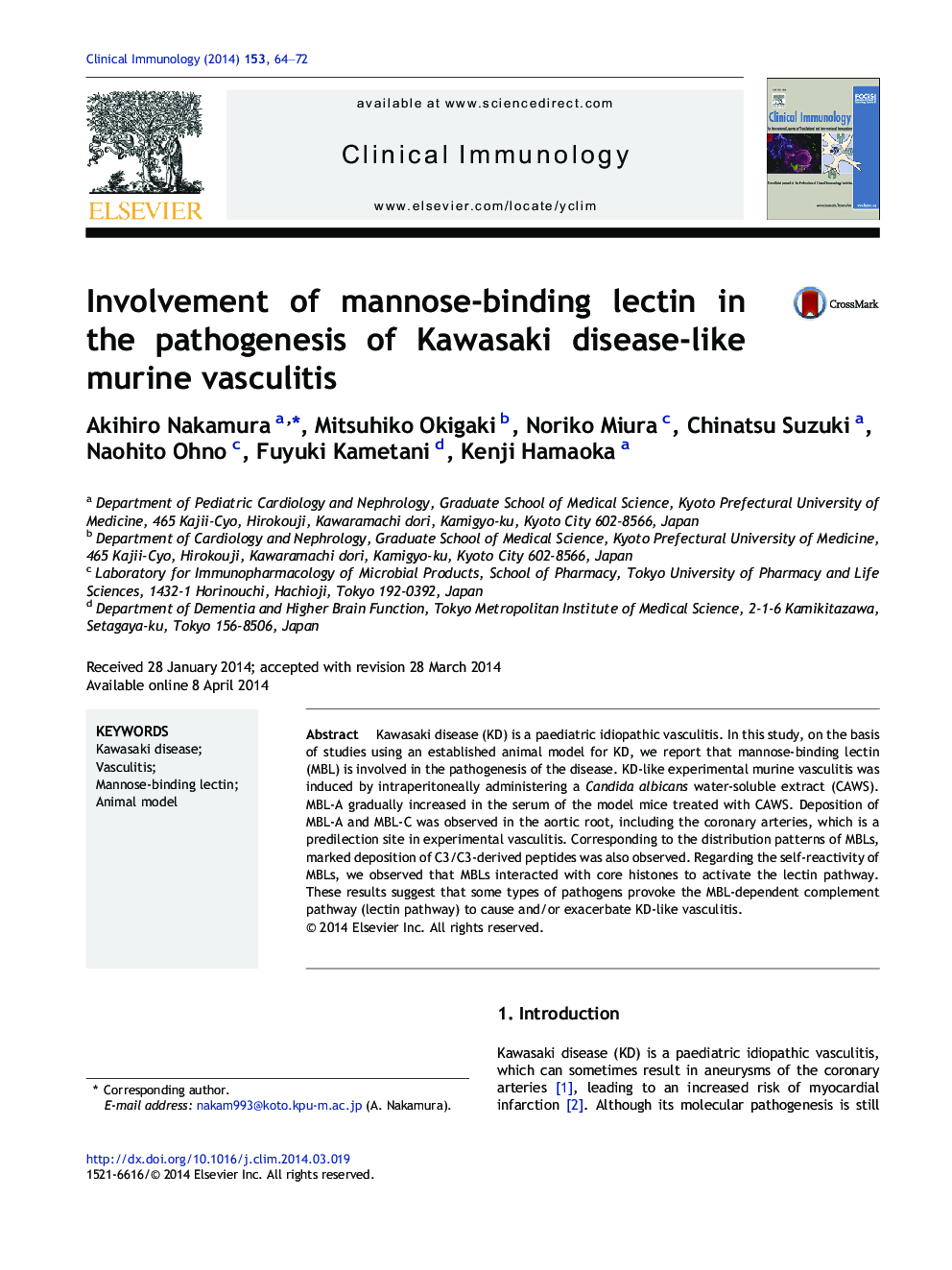| Article ID | Journal | Published Year | Pages | File Type |
|---|---|---|---|---|
| 6087457 | Clinical Immunology | 2014 | 9 Pages |
â¢We used a mouse model for Kawasaki disease (KD), a paediatric idiopathic vasculitis.â¢MBLs are involved in KD-like murine vasculitis.â¢MBLs bind to histones to activate the lectin pathway.â¢KD-like vasculitis is associated with activation of complement pathways.
Kawasaki disease (KD) is a paediatric idiopathic vasculitis. In this study, on the basis of studies using an established animal model for KD, we report that mannose-binding lectin (MBL) is involved in the pathogenesis of the disease. KD-like experimental murine vasculitis was induced by intraperitoneally administering a Candida albicans water-soluble extract (CAWS). MBL-A gradually increased in the serum of the model mice treated with CAWS. Deposition of MBL-A and MBL-C was observed in the aortic root, including the coronary arteries, which is a predilection site in experimental vasculitis. Corresponding to the distribution patterns of MBLs, marked deposition of C3/C3-derived peptides was also observed. Regarding the self-reactivity of MBLs, we observed that MBLs interacted with core histones to activate the lectin pathway. These results suggest that some types of pathogens provoke the MBL-dependent complement pathway (lectin pathway) to cause and/or exacerbate KD-like vasculitis.
